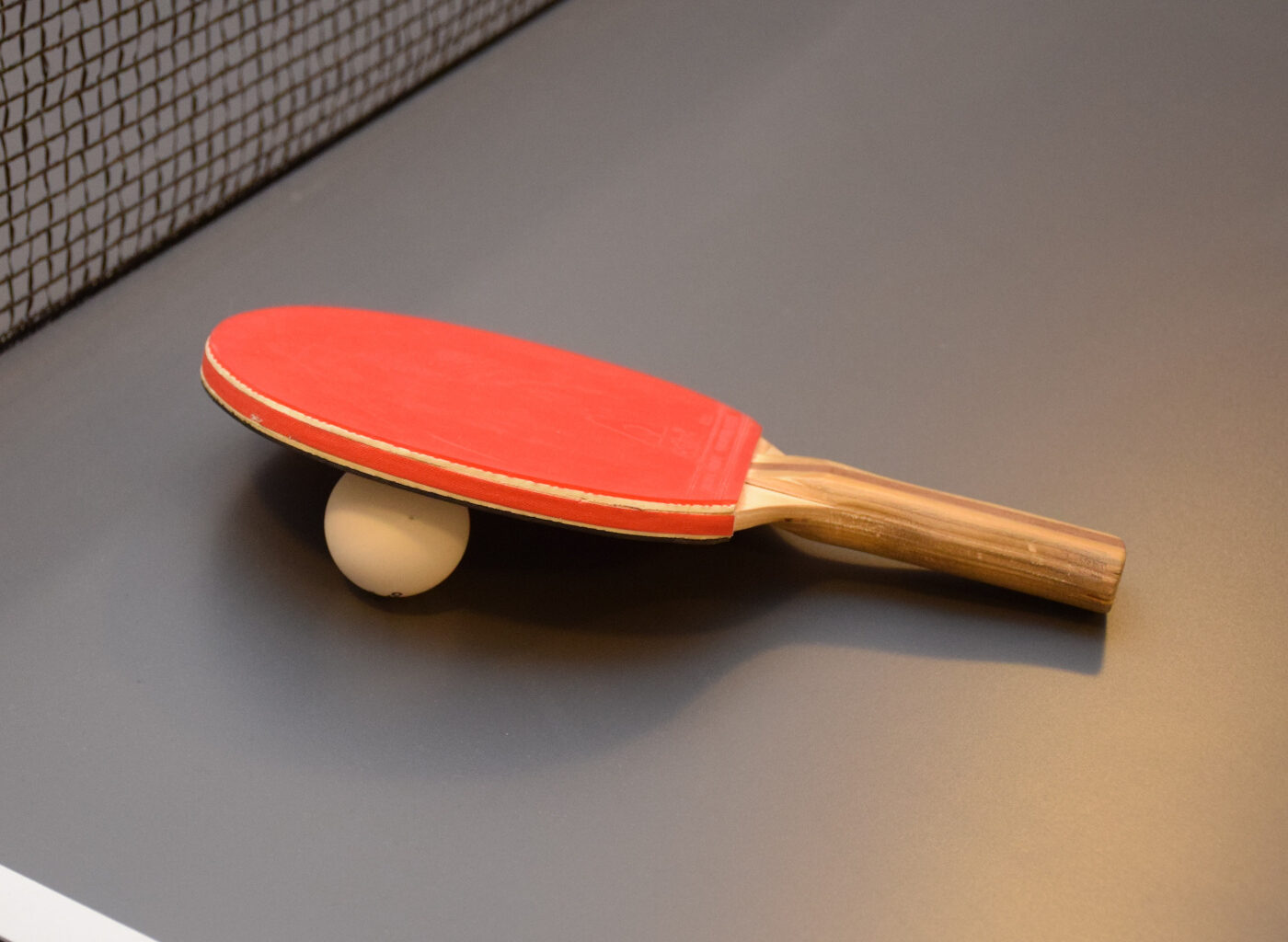

Towards Improved Durability and Performance
Table tennis is a demanding sport that relies on precision, speed and control. Among the essential elements of this equipment, the racket plays a central role.
In today’s context of growing concern for the environment and sustainability, composite and biocomposite table tennis rackets represent a technological advancement that attempts to balance performance with ecological considerations.
This article explores the rise of composite and biocomposite table tennis rackets, their benefits and their impact on the sport and the environment.
The Evolution of Materials
Historically, table tennis rackets were primarily made from solid wood. However, over time, gamers and manufacturers have sought to improve performance. In particular, they introduced composite materials such as carbon, Kevlar and fiberglass. These materials have made racquets lighter, faster and with better control.
Composite rackets
A Major Technical Development
Table tennis, a sport that requires agility, reflexes and precision, relies largely on the player’s equipment. Among the key elements of this equipment, the table tennis racket plays a central role. This section explores composite table tennis rackets, a significant technological advancement that revolutionized the sport.
The Origins of blades and the Introduction of Composites
Table tennis rackets were mainly made from solid wood. These rackets had their advantages. However, they were limited in terms of speed and power. This is largely due to the natural flexibility of wood.
The transition to composite table tennis rackets marked a major turning point in the sport. These rackets therefore combine wood with other materials. They contain, for example, carbon, Kevlar, or fiberglass to create a hybrid product. The advantages of these composite materials are multiple.
Lightness and Solidity
Composites are lighter than solid wood. This reduces player fatigue. However, they remain very strong, offering increased durability.
Power and Speed
The stiffness of composites allows players to generate more power and speed in their shots.
Improved Control
Composite racquets are designed to provide excellent control thanks to the materials’ ability to absorb vibrations. This improves the precision of shots.
Reduction of the Trampoline Effect
Composites reduce the “trampoline” effect often seen with wooden racquets, ensuring a more consistent ball response.
The Impact on the Game
The introduction of composite table tennis rackets dramatically transformed the game. Players can now achieve levels of power and control unimaginable with traditional wooden racquets. However, it has also raised questions about the balance between equipment and individual skills, as more powerful rackets can potentially compensate for a less developed game.
An Unmissable Evolution
In conclusion, composite table tennis rackets represent an essential development in this sport. Indeed, they have considerably expanded the technical possibilities of players, while offering improved control. However, it is important to emphasize that racquet technology should not override the importance of individual skill and strategy. Players must find a balance between using these cutting-edge tools and mastering their skills to achieve excellence in modern table tennis.
Composite racquets use a mix of wood and synthetic materials. They offer greater strength and rigidity compared to solid wood rackets, allowing players to generate more power and control. However, these materials are not without environmental impact.
Biocomposite rackets
An Innovative Fusion of Performance and Sustainability
Biocomposite rackets are a response to these growing environmental concerns. They use renewable materials such as linen fiber, hemp or basalt fiber in combination with biodegradable or recycled resins. These rackets are designed to offer performance comparable to composite rackets while reducing their environmental impact.
This section explores the rise of biocomposite table tennis rackets, a technological advancement that combines sporting performance and environmental responsibility.
The Sustainability Context
In a time where sustainability and environmental responsibility are major concerns, Mamba Blades has adapted by creating biocomposite racquets. Indeed, unlike traditional composite rackets which use synthetic materials, biocomposite rackets incorporate natural materials.
Advantages of Biocomposite rackets
Environmental Sustainability
Natural and renewable materials reduce the environmental impact of racket manufacturing, thus contributing to the preservation of the planet.
Lightness and Solidity
Biocomposite racquets remain light and strong, providing players with the strength and performance needed.
Waste Reduction
Ecological and recycled resins limit the production of plastic waste. It’s an essential practice in a world increasingly aware of plastic pollution.
Sports Performances
Biocomposite racquets are designed to provide performance comparable to traditional composite racquets. They therefore ensure a quality game.
Environmental Consciousness
Players who opt for biocomposite racquets show a commitment to environmental sustainability.
Technological Considerations
Biocomposite rackets provide a balance between sporting performance and environmental sustainability. That’s why Mamba Blades strives to create rackets that meet players’ demands while minimizing their impact on the environment.
A Virtuous Evolution
To summarize, biocomposite table tennis rackets are an innovative response to growing environmental concerns while delivering high-level performance. This technological development thus illustrates Mamba Blades’ commitment to environmental sustainability and ecological awareness. This is why players who choose these rackets play a role in promoting a practice that is more respectful of the planet while continuing to excel in their sport. Biocomposite table tennis rackets are a concrete example of how technological innovation can be put to the service of a more sustainable world.
The Sustainable Future of Table Tennis
Finally, composite and biocomposite table tennis rackets reflect the constant evolution of the sport, not only in terms of performance, but also with regard to environmental considerations.
As players look for ways to improve their performance, Mamba Blades seeks more environmentally friendly solutions. Biocomposite rackets embody this balance between technological innovation and ecological sustainability, paving the way for a brighter future for table tennis, where performance and environmental awareness come together harmoniously.










